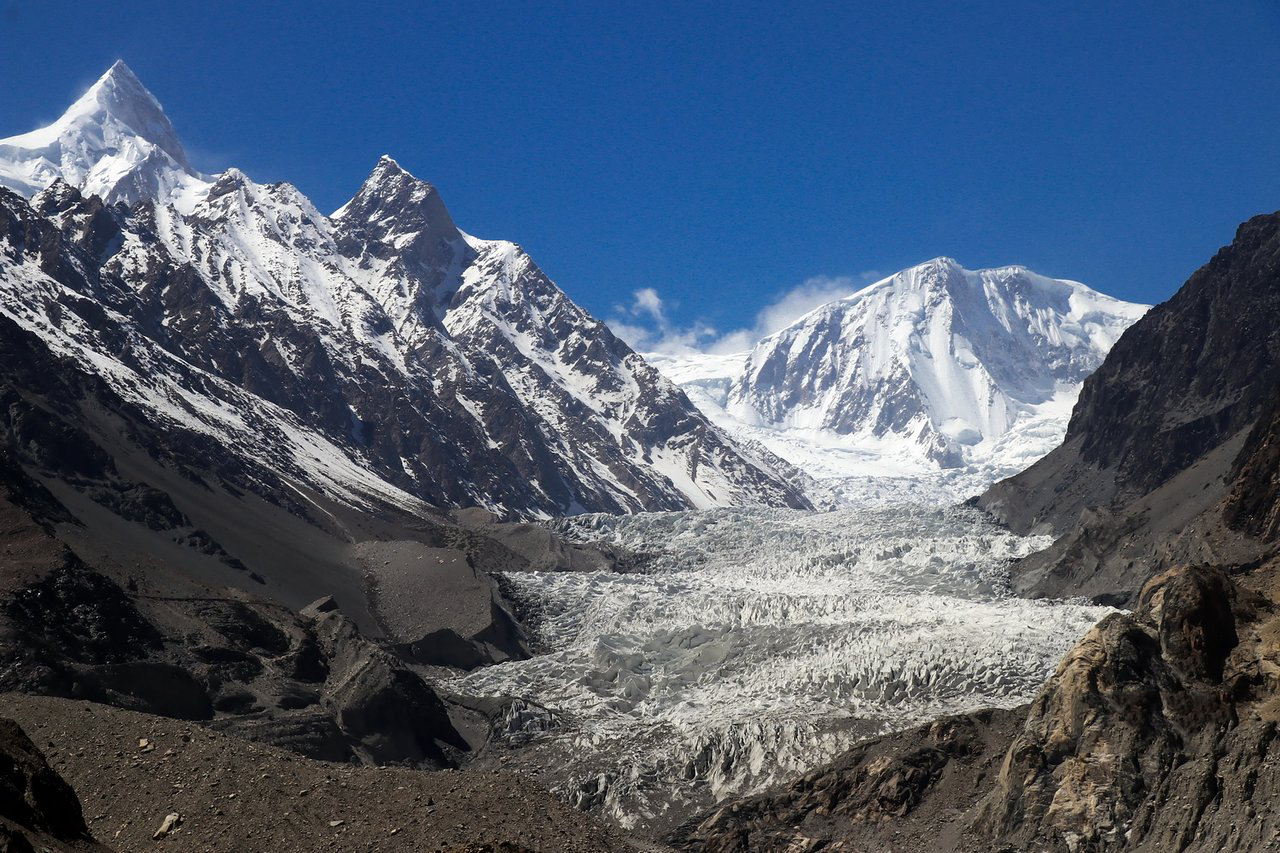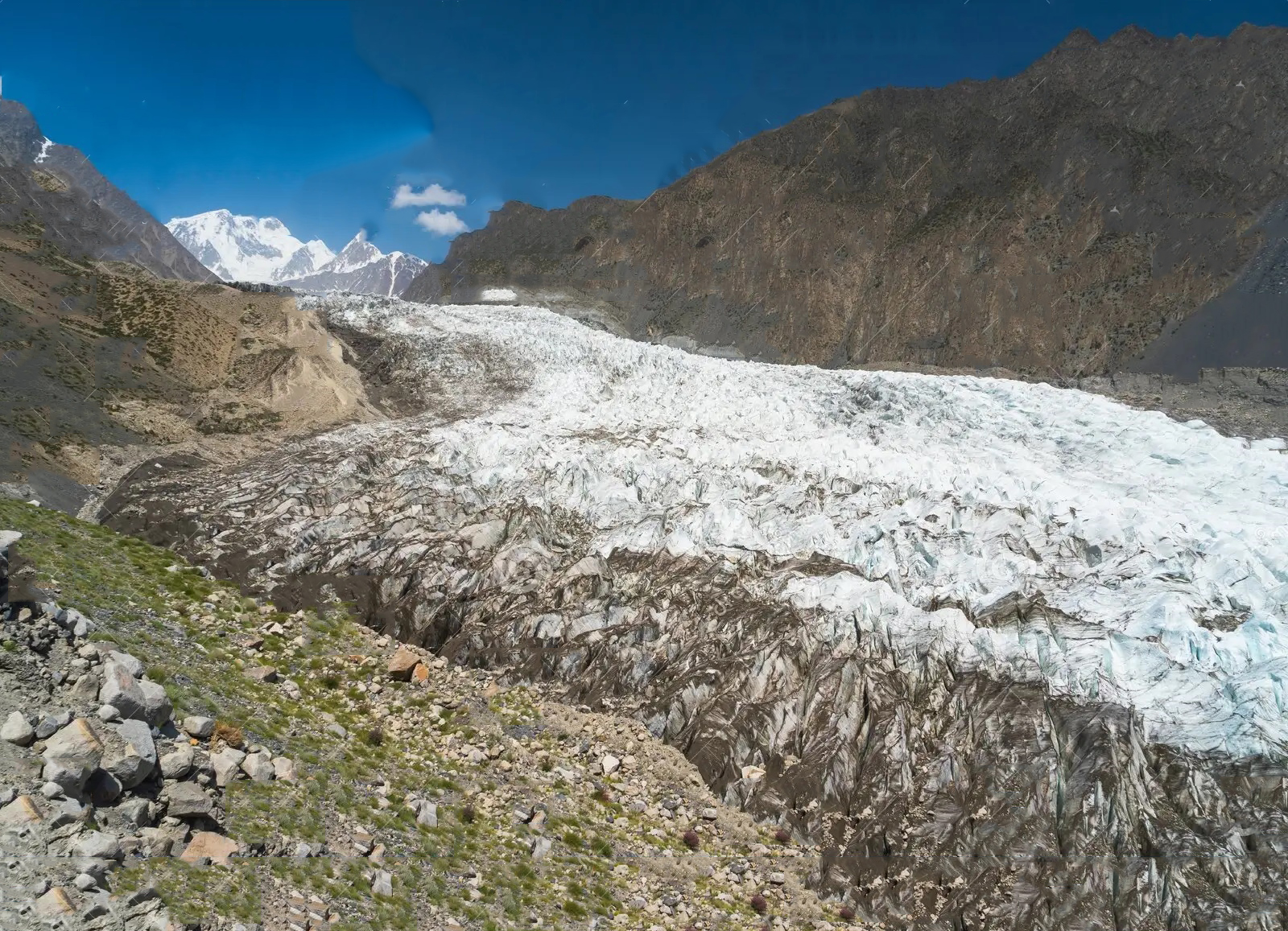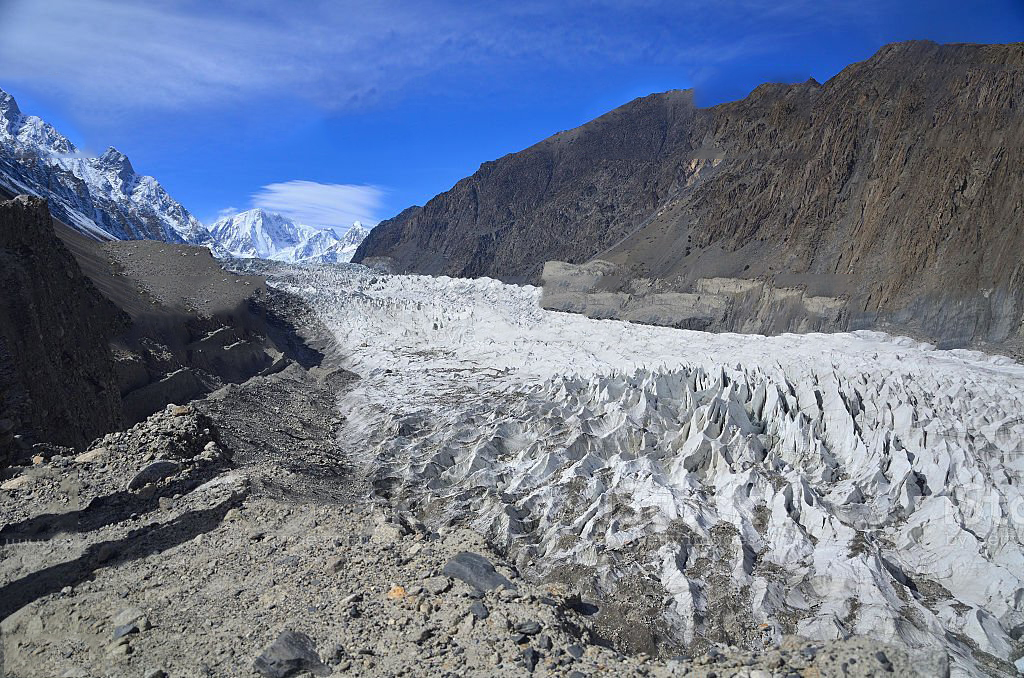
Passu Glacier is a remarkable natural marvel. Situated in the Hunza Valley of the Gilgit-Baltistan region of Pakistan, the Passu Glacier is a breathtaking natural wonder renowned for its mesmerizing beauty. The glacier boasts deep crevasses and crystal-clear ice that contrast dramatically against the rugged, towering mountains surrounding it. Moreover, this glacier is home to a range of flora and fauna, including rare and endangered species like the Marco Polo sheep and snow leopard.
Covering an area of approximately 56 square kilometers, the Passu Glacier is a major tributary of the Batura Glacier- the fifth longest glacier worldwide outside of the Polar Regions. This glacier is about 19 kilometers long and located at an elevation of approximately 3,800 meters (12,500 feet), shrouded by prominent peaks fronted by Passu Sar, Tupopdan Peak, and Shisper Peak, among others. The Passu Glacier is formed by ice and snow that accumulate on the mountainsides melting and flowing downhill gradually. It sustains the local ecological system and is a life source for the communities around it. Nonetheless, the ongoing issue of climate change has taken a toll on the Passu Glacier just like many ice-capped regions worldwide, causing it to retreat for several decades. Experts predict it will vanish altogether within the next few decades if necessary measures are not taken to curb the effects of climate change. Despite such setbacks, the Passu Glacier is still an excellent tourist and adventure spot.
Several small villages surround the glacier and have unique cultures and traditions that visitors can immerse themselves in. Furthermore, adventurers can embark on a trek, taking them through picturesque valleys, across rushing rivers, and over steep mountain passes to the glacier. The Passu Glacier is a must-see wonder for all those who visit the Hunza Valley. Its stunning beauty and critical ecological importance make it a destination that is both awe-inspiring and educative. Yet, it is a constant reminder of the urgent need to address climate change and conserve our planet’s delicate ecosystems for future generations.



